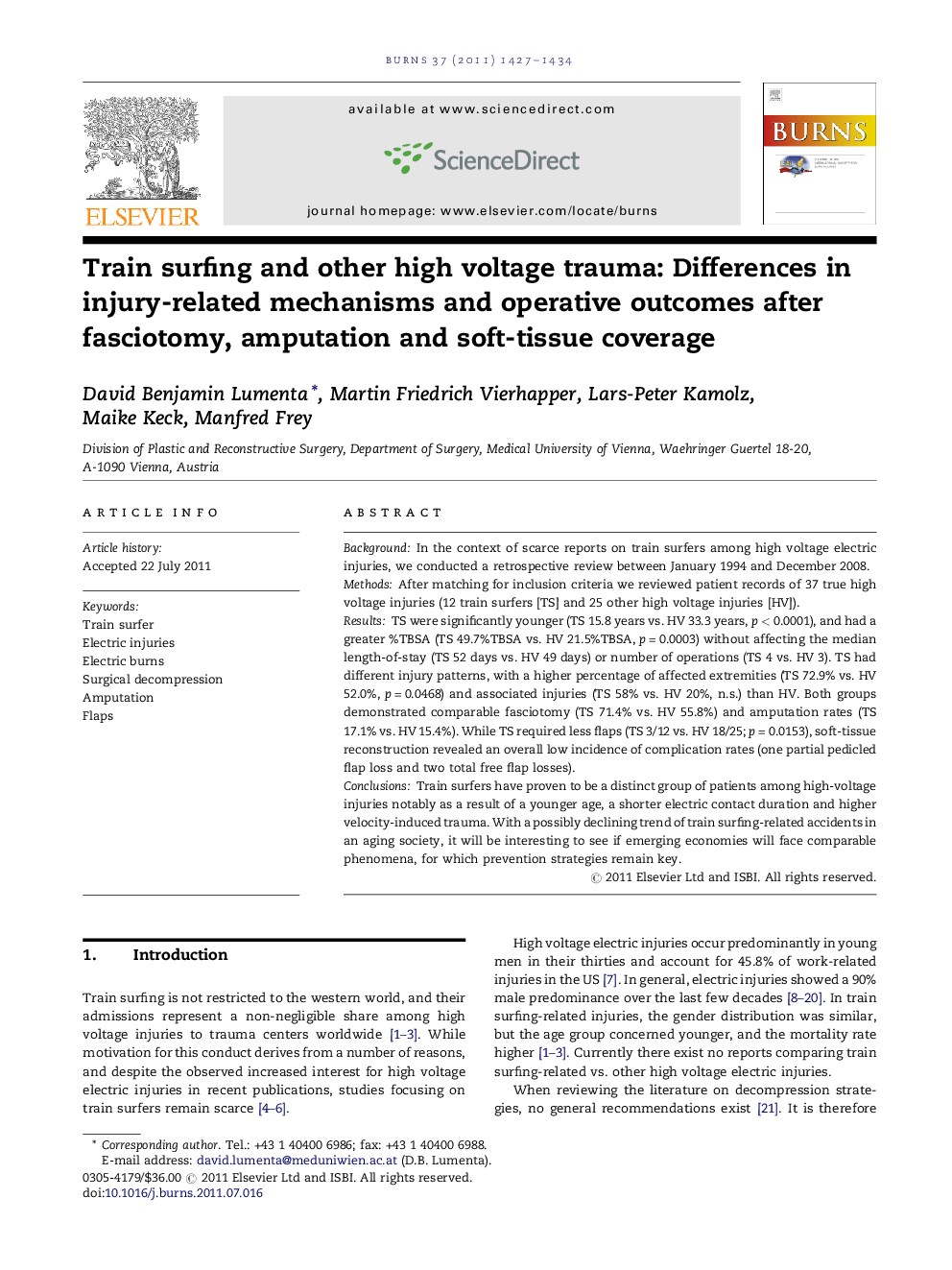| Article ID | Journal | Published Year | Pages | File Type |
|---|---|---|---|---|
| 3105199 | Burns | 2011 | 8 Pages |
BackgroundIn the context of scarce reports on train surfers among high voltage electric injuries, we conducted a retrospective review between January 1994 and December 2008.MethodsAfter matching for inclusion criteria we reviewed patient records of 37 true high voltage injuries (12 train surfers [TS] and 25 other high voltage injuries [HV]).ResultsTS were significantly younger (TS 15.8 years vs. HV 33.3 years, p < 0.0001), and had a greater %TBSA (TS 49.7%TBSA vs. HV 21.5%TBSA, p = 0.0003) without affecting the median length-of-stay (TS 52 days vs. HV 49 days) or number of operations (TS 4 vs. HV 3). TS had different injury patterns, with a higher percentage of affected extremities (TS 72.9% vs. HV 52.0%, p = 0.0468) and associated injuries (TS 58% vs. HV 20%, n.s.) than HV. Both groups demonstrated comparable fasciotomy (TS 71.4% vs. HV 55.8%) and amputation rates (TS 17.1% vs. HV 15.4%). While TS required less flaps (TS 3/12 vs. HV 18/25; p = 0.0153), soft-tissue reconstruction revealed an overall low incidence of complication rates (one partial pedicled flap loss and two total free flap losses).ConclusionsTrain surfers have proven to be a distinct group of patients among high-voltage injuries notably as a result of a younger age, a shorter electric contact duration and higher velocity-induced trauma. With a possibly declining trend of train surfing-related accidents in an aging society, it will be interesting to see if emerging economies will face comparable phenomena, for which prevention strategies remain key.
